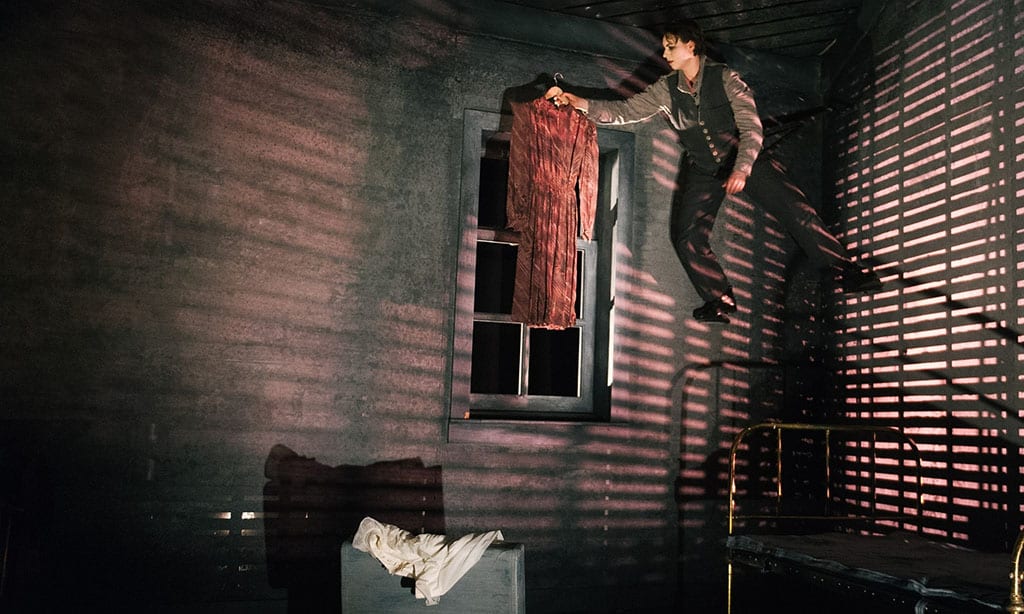Told with a nightmare’s logic Siobhán Daly and Bruce Guthrie’s production of Manfred Karge’s modern fairytale, is a compelling exploration of surviving trauma. Man to Man is based on the real life narrative of Ella Gericke who took on her husband’s identity after his death in pre-Nazi Germany. First staged in 1987 at the Traverse Theatre, Edinburgh, the play’s current manifestation benefits greatly from the technology now available to it.
Set in a wooden slatted room, empty save for an armchair and metal framed bed, the feel is immediately of a prison cell. Bain’s muted colour costume and heavily Kholed eyes add to the effect and with all of the locations she visits, disguised as husband Max, it’s unmistakable by end that the space ultimately represents the prison of her mind. A chair is suspended from the wall, in which she watches what might be the Nuremburg Trials; she disappears into the suitcase which holds the appendages of her formal life as Ella; ghostly deformed shadows appear on the wall, spectres within an oppressive regime or disembodied soldiers.
Both convincing as hardened, isolated drunk Max and the host of other male figures she plays, Bain is for the most part mesmerising. She effortlessly slides her voice between a Glaswegian dialect, to represent Max, and RP to indicate her shift into Ella. After her husband’s untimely death, Ella chooses to put on her husband’s trousers ‘for want of a man’ and take on his job and social commitments. We watch as the rise of the Nazis and the cruelties of war force her into compromising situations, all whilst terrified that she will be physically exposed and thus discovered.
Amongst its other achievements, Karge’s piece is a fascinating, and very modern, discussion on identity and how in the shift from peacetime circumstances a person can find their sense of who they are distressingly in limbo. It’s is also a beautiful piece of poetry, one which isn’t always easy to follow but doesn’t lose any of its richness in the sometimes inaccessible references. In one moment we see Ella cradling a cushion whilst her shadow projected on to the back wall shows a moving baby in her arms. This interplay of Ella’s imagination with the reality she inhabits layers the longing and grief that characterise her story and arguable slide into madness. Personally, I wasn’t a fan of the ambiguous female inner voice that echoed from the speakers, that was a less successful addition to an otherwise extremely high value production. It stands out precisely for that reason; Man to Man is a visually stunning piece, energetically held in the hands of an outstanding physical and emotional performer.

